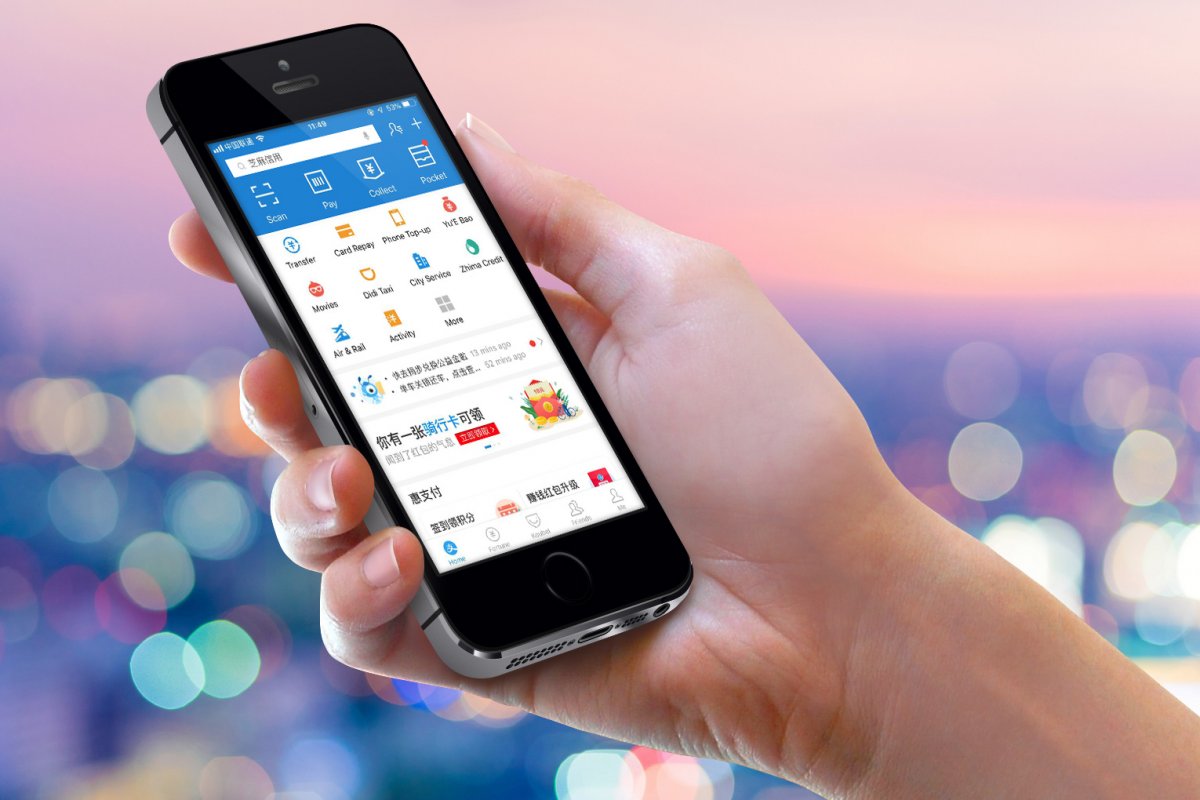Learn more about moving to China
As an expatriate living in China, having a Chinese driver's license can greatly improve your mobility and convenience. Fortunately, China has agreements with some countries that allow for the conversion of foreign driver's licenses to Chinese ones. In this article, we will provide you with a step-by-step guide on how to convert your foreign driver's license to a Chinese driver's license. It is important to remember, below are the general steps. Some cities and jurisdictions may have a few extra steps or omit a few steps. Please be sure to work closely with your Maxxelli Consultant to navigate the process. Step 1: Check Eligibility: Before beginning the conversion process, it's important to ensure that you meet the following eligibility criteria: 1. Residency Status: You must hold a valid Chinese residence permit with at least three months of remaining validity. 2. Country of Origin: Only citizens of certain countries are eligible for license conversion. Check with the traffic administration authority in your respective province to verify if your home country is included. Step 2: Prepare the Required Documentation: To successfully convert your foreign driver's license, you will need to gather the following documents: 1. Valid Passport: Provide the original and a copy of your passport, including the pages containing your visa and residence permit information. 2. Original Foreign Driver's License: Your original driver's license from your home country must have a minimum of three months' validity remaining. 3. Notarized Translation: If your foreign driver's license is not in Chinese or English, you will need an official notarized translation. You can obtain this translation from a certified translation service provider. 4. Completed Application Form: Obtain the application form from your local Vehicle Administration Office or Traffic Police Bureau. Fill it out accurately with your personal information and sign where required. 5. Medical Check Certificate: Some provinces require a medical check certificate, which can be obtained from designated hospitals or clinics. Check with your local traffic authorities to determine whether this requirement applies to you. Step 3: Get Your Documents Notarized and Translated: If your foreign driver's license is not in Chinese or English, you will need to have it notarized and translated. Contact a certified translation agency or consult your embassy or consulate in China for approved translation services. Step 4: Visit the Local Vehicle Administration Office or Traffic Police Bureau: Once you have collected all the required documentation, visit the local Vehicle Administration Office or Traffic Police Bureau with the following: 1. Valid Passport and Residence Permit: Provide the original copies of both documents, along with photocopies. 2. Original Foreign and Translated License: Submit the original foreign driver's license along with the notarized translation and photocopies of both. 3. Completed Application Form: Submit the completed application form, ensuring that all fields are accurately filled out. 4. Passport-Sized Photos: Bring a few recent passport-sized photos, as they may be required for processing your application. 5. Application Fee: Prepare the applicable fee as required by your local office. Payment methods can vary, so inquire in advance about accepted payment options. Step 5: Written Examination and Driving Test: Depending on your province and nationality, you may be required to take a written examination and/or a driving test. Contact your local Vehicle Administration Office or Traffic Police Bureau for information on whether you need to complete these tests and to obtain study materials or guidance. For the written exam, it will require some amount of studying as numerous road rules may differ from your home country. The question database can be found in apps and WeChat Mini-Programs. Be sure to ask your Maxxelli Consultant for the updated question database for your city or search "Laowai Driving" for the Mini-Program. Converting your foreign driver's license to a Chinese driver's license is a significant step towards improving your freedom of movement as an expatriate in China. By carefully following the outlined steps and ensuring you have all the necessary documentation, you will be well-prepared to navigate the conversion process. Remember to check with your local traffic authorities for any province-specific requirements. Safe travels!
Having a Chinese mobile number can be crucial for foreigners living in or visiting China. It allows you to communicate with local contacts, access internet services, and conveniently navigate various aspects of daily life. For daily life in China, mobile access is crucial, even buying your favorite local snacks from a street vendor is via mobile payments. Although the process of obtaining a Chinese mobile number might seem daunting, this article will guide you through the steps, requirements, and options available. Step 1: Check eligibility and documentation: To obtain a Chinese mobile number, you need to check if you are eligible as a foreigner. Generally, if you are a temporary or permanent resident in China, you will be eligible, but it's essential to research specific requirements based on your circumstances and status. Here are some common documents required: 1. Passport: A valid passport with your entry visa. 2. Residence Permit: Temporary or permanent residence permit issued by Chinese authorities. 3. Registration Form: Official registration form provided by local authorities upon your arrival. Step 2: Choose a telecommunication operator: In China, three major telecommunication operators provide mobile services: China Mobile, China Unicom, and China Telecom. Each operator offers different services, coverage, and pricing plans. Research the coverage and service quality in your area before choosing an operator. Step 3: Visit a service outlet: To obtain a Chinese mobile number, you need to visit a service outlet of your chosen telecommunication operator. These outlets are available in most cities, and you can easily find them in shopping centers or commercial areas. Be prepared for some potential language barriers, as not all staff may speak English fluently. Step 4: Choose a number plan: Once you are at the service outlet, a staff member will guide you through different number plans suitable for your needs. They will explain various calling, texting, and data options available, so ensure you communicate your preferences clearly. Consider factors like domestic/international call rates, texting fees, and data packages. Ask for a demonstration, if possible, to understand any user interfaces or apps associated with the plan. Step 5: Complete the registration process: To complete the registration process, you will need to provide your identification documents (passport, residence permit, and registration form). The staff will assist you in filling out the registration forms and ensure all necessary information is included accurately. You may be required to provide a temporary accommodation address in China. Step 6: Pay and activate your SIM: After choosing a number plan and completing the registration process, you will have to pay for the SIM card and the selected plan. The staff will help you activate the SIM card and may guide you through setting up your mobile device for first-time usage. They can assist with tasks like installing the correct APN settings for internet access, accessing voicemail, or understanding how to manage your account. Conclusion: Acquiring a Chinese mobile number might seem complicated, but by following the steps outlined above, the process becomes more manageable. Remember to research the eligibility requirements, consider different telecommunication operators, and choose a plan that suits your needs. Of course, part of the Maxxelli service, we are able to support. Just ask your consultant for help!
After concluding your work in China, or even during your work period, you might need to transfer the money you earned to a foreign country? Simply provide the following documents, and you can transfer the funds to the country of your choice through the bank: The process is straightforward: • Prepare all necessary documents. • Visit the bank counter in person. Please note that this transaction requires personal handling. • The funds will be transferred to your overseas account within 1-5 working days. Required Documents: · Original Passport · Valid Visa (within the validity period) and Work Permit. · Ensure all original documents are provided and taken to the bank for the transfer. Company or Employer Documentation: · Tax List · Monthly Salary List · Work Contract · Work Permit · All documents must be in their original version · Material from Employee's Overseas Account: · For this section, you are also required to fill in all the information at the bank, and the bank will provide a form during the transaction. Your overseas account information: · Full Name · Overseas Address · Bank Name · Bank Address · Bank Account Information · Swift Code Here are a few common phrases in Chinese that will help: - 转外汇 Foreign Currency Exchange - 转账 Transfer - 外汇转账 Foreign Exchange Currency Transfer If you have all the documentation required, you are able to wire money abroad as an expat. Once you are at the bank, there will be a lot of questions and paperwork. Once the process is completed the first time, it will become easier in the future, but be sure to patient. If you need support, do not hesitate to reach out to your Maxxelli Consultant.
China's high-speed rail system has undergone a remarkable transformation over the past two decades, revolutionizing transportation in the country and setting an exemplary standard for sustainability. With ambitious future plans, China's dedication to expanding and enhancing their high-speed rail network is poised to drive even greater sustainable development in the years to come. High-Speed Rail Giant: China entered the high-speed rail sector in 2008 when it introduced the Beijing-Tianjin Intercity Railway, their first commercial high-speed rail line. This milestone marked the beginning of an extraordinary journey towards achieving a more sustainable and efficient transportation system. Connectivity and Accessibility: Over the past 20 years, China has focused on developing an extensive high-speed rail network, connecting major cities and regions, which has significantly reduced travel times and increased accessibility for both urban and rural populations. This improved connectivity promotes social inclusion and economic growth while minimizing the environmental impact of alternative modes of transportation. Environmental Benefits: China's high-speed rail system has not only rendered transport faster and more convenient but is also playing a crucial role in curbing carbon emissions. By shifting passenger traffic from cars and planes to trains, the country has reduced its carbon footprint significantly. Trains are considered a more sustainable alternative, emitting lower greenhouse gases and consuming less energy per passenger kilometer compared to other modes of transportation. Boosting Regional Development: The development of high-speed rail has been instrumental in bridging the gap between urban and rural areas, fostering regional development and reducing socio-economic disparities. The rail network has facilitated the flow of goods, services, and talent while expanding employment opportunities far beyond metropolitan centers. This shift towards regional development creates more sustainable and balanced growth across the country. 5 Year Future In China's latest Five-Year Plan for 2021-2025, the government aims to further advance and consolidate its high-speed rail system. Several key focus areas have been identified for future development: a. Expansion and Upgrades: Additional lines will be built, connecting more cities and regions to the high-speed rail network. Upgrades will also enhance the efficiency and capacity of existing lines, increasing their speed and further reducing travel times. b. Technology and Innovation: The plan highlights the importance of embracing cutting-edge technology, including the adoption of more sustainable energy solutions such as electrification and reliance on renewable energy sources. Research and development efforts will continue to improve the overall sustainability of the system. c. Integration: The government aims to enhance integration between high-speed rail and other modes of transportation, including airports, urban transit systems, and intermodal logistics. This comprehensive approach promotes seamless connectivity and reduces the overall environmental impact of the transportation sector. Conclusion: China's high-speed rail system plays a key role in China's past and future development. Think about this, within around 5 hours of Wuhan you have access to nearly 1 billion people via high-speed rail. No need to drive or fly, take the train and connect.
If you plan to work or live abroad and require a criminal record check for the past few years, it's much more convenient to obtain one before leaving China. Trying to get it while you're out of the country can be costly and complicated, with agencies quoting prices from 3,000 RMB onwards. Likewise, if you've been residing in China for some time and are considering a new job, especially in roles like teaching, you might be asked to provide a non-criminal record. 📌 Here's a step-by-step guide on how to get your Criminal Clearance Certificate (officially known as 无犯罪记录证明). Requirements: Resided in China for more than 6 months on a temporary or permanent resident permit. No history of criminal sanctions during your stay. Keep in mind that there is no central authority in China that issues certificates of non-criminal records covering the entire country. So, the certificate you receive in one city only applies to your time spent there. If you've lived in multiple locations in China, you'll need to obtain separate records from each province. Visit the Entry-Exit Department: The location for obtaining a Non-Criminal Record varies depending on your city. In some cities, you can get it at the local police station, while in others, it's available at the Public Notary office. In Shanghai, you can get it at the Entry Exit Department. No appointment is necessary; just visit during their regular office hours and go straight up to the 3rd floor, room 303 marked "Overstay." Prepare the Required Documents: • Original Passport (if the record period includes time on your old passport, bring that too). • Copy of the first page of your passport. • Copies of all China visa pages from your passports covering the entire non-criminal record period. • Processing Time: The typical processing time for a non-criminal record certificate is 15-20 working days, excluding mailing time. So, it's advisable not to wait until the last minute before leaving the country. Get It Notarized: If you intend to use this document outside of China, you may need to get it notarized by the consulate of the country where you plan to use it. Make sure to check with your respective consulate for specific requirements. We hope this guide helps you navigate the process of obtaining your non-criminal record with ease. If you have any questions or need further assistance, feel free to reach out. Safe travels!
Anyone who has spent any time in China will know the importance of Alipay. With over 870 million active users as of 2018 and 100 million transactions made daily, Alipay is the most widely used third-party online payment service provider in China and is integral to daily life. [763c3f32-aaf2-49a9-ab4b-9f610169fcd0.jpeg.1200.800.jpg] What is Alipay? Established in 2004 in Hangzhou by Alibaba founder and Chinese business magnate Jack Ma, Alipay today operates alongside more than 65 financial institutions, including Visa and Mastercard, to enable payment services to both huge multinational corporations such as Taobao, as well as more than 460,000 online and local Chinese businesses. The platform works on smartphones via the Alipay Wallet app, whereby users can scan QR codes and enable in-store payments, in addition to a range of services including peer-to-peer money transfer, bank account management, the paying of credit card bills, prepaid mobile top up, food ordering and taxi booking. In fact, just about any payment - from buying movie tickets to paying utility bills - can be conducted via the app, making it an indispensable tool for anyone visiting or living in China. [5d01de95a3103dbf57a462e9.jpeg] Currently, Alipay is used by over 300 merchants worldwide to sell directly to consumers in China, and is available in 18 foreign currencies, demonstrating its expansive reach and influence. In 2013 Alipay took over Paypal as the world’s largest mobile payment platform and continues to grow year on year. New Functions for Overseas Visitors Up until recently, Alipay could typically only be accessed using a Chinese bank account and phone number, making it difficult for those visiting for a short amount of time to use the app. Previously, those wishing to use Alipay without access to a Chinese bank account would require someone with a bank account to top up their account, and then pay them back - frequently in cash - a largely inconvenient and clumsy process. [Image] As of 5th November 2019, however, Alibaba-affiliated Ant Financial (formerly Alipay) announced that travellers in China would also be able to use Alipay’s services via an international version of the app. Given they have an overseas phone number, a valid visa and a bank card, users from abroad can use the ‘Tour Pass’ mini-app on Alipay to load money on to their account and use the app in the regular way. Users then scan or show their QR code at Alipay enabled stores, providing a solution to the all too common problem of how to pay for products and services when visiting China. [Image] With Alipay and WeChat pay having largely replaced the use of plastic cards and cash across China, this move to allow those from abroad use of the app aims to tap into the growing number of short-term visitors to China. With 2018 seeing an influx of 31 million visitors to the country, contributing a total spend of $73 billion, there’s clearly a vast market to be explored when it comes to overseas travellers - whether visiting for work or tourism. There are a couple of restrictions when it comes to using Alipay’s new ‘Tour Pass’, however. For example, there is a minimum top up amount of 100RMB ($14) and a maximum of 2000RMB ($285), and the card is only valid for 90 days, after which any remaining funds are refunded. These restrictions seem somewhat minor in comparison to the vast benefits offered by this new service. How to use it? Step 1 – Download Alipay and sign up with your overseas phone number [Image] Step 2 – Select the Alipay International Version and Tap ‘Tour Pass’ [Image]Step 3 – Select the amount you want to load [Image]Step 4 – Verify your identity and add your bank card information [Image]Step 5 – Once you’ve loaded the money, you’re good to go. Scan or show your QR code to enable payments. [Image] Response from Competitors In response to this recent development, it is expected that Alipay’s rivals WeChat Pay and UnionPay will also look to opening up their services to visitors from overseas in the near future. On 6th November, just a day after Alipay’s announcement, Visa put out a statement in support of Tenecet (the developer of WeChat), announcing that ‘[they are] excited to work with Tencent, one of China’s leading fintech companies, on a secure, convenient and interoperable mobile payment experience that will benefit the large number of international travelers visiting China.’ Clearly, this demonstrates a movement by WeChat to rival the latest update from Alipay, but an actual time frame for events is yet to be revealed.
Mianzi (面子) or face, is a key motivator among Chinese business people. Face factors in to many actions and decisions taken in the business world, as well as in day to day life. In loose terms, you can think of face as reputation, honor or respect. You could also think of it as public image, particularly through the eyes of one’s close connections. To do business in China, you need to have at least a basic understanding of face. One of China’s most influential writers, Lu Xun, referred to face as “the guiding principle of the Chinese mind”. It is a term Chinese understand intuitively, while Westerners seemed to struggle to grasp its concept. In reality, the concept of face exists in many societies, however it more prominent and nuanced in Chinese culture. In the Qing Dynasty, foreigners would threaten court officials when their requests were rejected, who would then comply out of fear due to the power of the West at the time. However when it was time to leave the Ministry, the foreigners were led out not through the main door, but the side door. This was done to not give foreigners face and implies that on a psychological level – China was superior. A current application of mianzi is when your boss treats you to meal, you have to go. If you don’t give face, you can forget about advancing your career in that company. The concept of face can also be taken out of the business context. Traditional Chinese social roles dictates an embarrassment if a man’s partner is better educated or earns more than him. In this relationship dynamic, the man is losing face and suffers considerable social pressure. FACE CAN BE GIVEN, GAINED, LOST OR SAVED. It’s easy to lose face. For example, face can be lost through a public insult or public contradiction or by failure to receive the proper level of respect. It is not really the act that causes a loss of face but the fact that the act is public, and there is public humiliation or loss of prestige involved. Loss of face must be avoided. Sometimes, Chinese go to great lengths to preserve face. It’s acceptable to lie to preserve face. In fact, lying is considered the better option, especially when it is understood that it is being done to preserve face. You may have noticed how Chinese business people don’t like to say “no” outright, even when that is their answer. This is because saying “no” would cause the rejected party to lose face. By not saying “no” directly they are preserving face. One good reason for not doing anything that would cause someone to lose face is that it could result in some form of retaliation. The face loser may attempt to regain face by doing something to cause the initial infractor their own loss of face. Face can be gained through public showings of respect or praise to a third party. See again how the simple act of giving praise isn’t what gives face, it’s the fact it is done publicly or via a third party. Face can also be gained by doing what others cannot do or by being exceptionally knowledgeable or wise. In China, it is not just individuals that have face, the concept applies to companies and government ministries too. In this case, think of it as the organization’s good reputation that they aim to preserve.
As the winter months get fully underway and the temperatures drop across the country, keeping warm is one of the biggest issues faced in China. Whilst staying in bed all day and wrapping up in layer upon layer of clothing may be tempting, those solutions aren’t necessarily practical. Instead, we have realistic solutions to help you beat the cold in China, so you can carry on your daily life comfortably. CENTRAL HEATING Moving to China, one of the major differences you’ll notice between here and the West is the presence of central heating – or lack of in the south of the country. The issue around which parts of the country get central heating and which don’t dates back to the 1950s, where limited resources determined that only those in the north of the country – or above the Qinling Mountains and Huaihe River, or what came to be known as the ‘Qin-Huai’ line – were given the privilege of indoor heating. This means that everywhere below this line, including the whole of the Sichuan, Yunnan, Guizhou and Jiangxi provinces plus others, must rely on other means to keep warm. Despite being introduced over fifty years ago, the premise that the north gets colder in the winter and is thus more in need of central heating still persists to this day. Even buildings currently being built below the ‘Qin-Huai’ line do not have central heating, and instead residents use the heat setting on their AC, or choose to install a space heating unit (空调 kongtiao) to keep away the winter chills. If you are currently living below this line and don’t have central heating, fear not – there are still several methods you can use to keep warm. [Image] USING YOUR AC It may seem counterintuitive to use an AC system during the winter, but this is the heating system many Chinese use to keep their homes warm. When it comes to actually using your AC system, however, you may have some difficulties if you cannot read Chinese. Check out our list of handy translations to help you out. Should you not find your A/C remote control in the list, then just send us a picture of your remote control to info@maxxelli-blog.com and we’ll add it to the list for you. We couldn’t bare just letting you freeze or melt like a popsicle! USEFUL VOCABULARY English | Chinese | Pinyin Air conditioner | 空调 | kōng tiáo Remote control | 遥控器 | yáo kòng qì Automatic | 自动 | zì dòng Cool | 制冷 | zhì lěng Dehumidifier | 抽湿 | chōu shī Heat | 制热 | zhì rè Fan Wind | 送风 | sòng fēng High Wind Speed | 高风 | gāo fēng Mid Wind Speed | 中风 | zhōng fēng Low Wind Speed | 低风 | dī fēng Set | 调整 | tiáo zhěng Mode | 模式 | mó shì On / Off | 开/关 | kāi/guān Wind Speed | 风速 | fēng sù Wind up/down | 上下风 | shàng xià fēng Economy | 经济 | jīng jì Time Set | 定时 | dìng shí Blowing Direction | 风向 | fēng xiàng Sweeping Wind | 扫风 | săo fēng Cleaning | 清新 | qīng xīn Display | 数显 | shù xiăn Strength | 强劲 | qiáng jìn Sleep | 睡眠 | shuì miăn Lighting | 灯光 | dēng guāng Cancel | 取消 | qŭ xiāo Power Source | 电源 | diàn yuán When using your AC, it’s also important to remember not to keep it on 24 hours a day, as tempting as that may be. Running your AC constantly can lead to condensation, as the water is being removed from the air as it’s conditioned, which is then drained via a pipe. If there’s too much condensation, your system can get clogged and will require maintenance – prevent this by simply leaving your AC off while out of the house, or turning it off for a few hours at a time. UNDER FLOOR HEATING In some cities, one of the preferred options of heating is to install underfloor heating; this can be preferable to using an AC unit, as it doesn’t dry the air out, and can provide more even heating across the apartment. This involves installing a hydronic or electric system of heating pipes under the floorboards if your apartment does not already have one, which is then typically operated via a thermostat on the wall. Again, you may need to use the tanslations above in order to operate your heating system. [Image] BUYING BLANKETS AND DUVETS One of the easiest ways to keep warm at home is to wrap up in cosy blankets and duvets – the thicker the better! These can be purchased in a number of ways. If looking in a shop or market, ask for a duvet down – “I would like to buy a Duvet down (我想买一件羽绒服)” – or if searching online simply enter “羽绒服”and you will find plenty of options. Or, for a totally free way to keep warm, snuggle up to someone you love! Whether its your boyfriend or girlfriend, husband or wife, son or daughter, or even a cat or dog, snuggling up is one of the best ways of staying cosy. [Image]
If the shareholder(s) deems it beneficial, a WFOE (Wholly Foreign Owned Enterprise) may be terminated before it’s natural conclusion; this may occur if the WFOE isn’t making a profit or isn’t running in the way the shareholder would like. Although it may be tempting to simply walk away from the WFOE, doing this is unwise for several reasons and can make it much more difficult to conduct business in China in the future. In order to close a WFOE, the shareholder must follow three stages: • LIQUIDATION • TAX CLEARANCE • DEREGISTRATION Although this can be a complex and time-consuming process, it is essential the procedure is followed properly as the consequences of not doing so can be severe. What Happens when a company does not follow the China company deregistration rules? • According to the Chinese law, the responsible legal representative will be blacklisted and will not be able to even buy an air ticket and train ticket in China. • Any overdue penalties should be paid if the legal representative of the company applies for a license for up to three years later. • The legal representative of a company that has been revoked is not allowed to engage in any business activities for at least 3 years in China. • It could even have ramifcations on flying in or out of China if there were penalities imposed; with the worst case scenario being prosecution. Liquidation Liquidation involves the appointment of a liquidation committee by the WFOE’s board of directors. This should be formed within 15 days after the declaration of dissolution, and is made up of all shareholders. This committee’s responsibilities include: • Choosing a member to be a legal representative • Preparing a balance sheet and list of all assets • Formulating and implementing a liquidation plan • Notifying local authorities and creditors about the WFOE’s liquidation • Making a public announcement in at least one provincial newspaper within 60 days of the committee being formed • Preparing a liquidation report Tax Clearance Next, the company will need to submit a Tax Clearance Declaration Report with both the state and local tax bureaus. These authorities will make sure that all taxes have been paid properly and in full, which is why it’s important to have a competent accountant whilst the company is in operation. In order for this to be completed, the company must have a backlog of all fapiao’s for every single payment the company made, which must be properly accounted for and ordered. Documents that may be reviewed include company contracts, employee payments and accounting vouchers, and it’s likely the authorities will look at the documents from the past 3 years, so having these is vital. This process is the most time-consuming stage and will take approximately 6 months if all taxes have been paid properly, or longer if there are any outstanding debts or taxes. Deregistration Once this stage has been processed and the bureau has issued a ‘notice of cancellation of tax registration’, the next step is deregistration. For this, the stakeholder of the foreign-owned entity will need to deregister with relevant authorities, including: • Tax authorities • Customs offices • The State Administration of Foreign Exchange (SAFE) • The Industrial and Commercial Administration Bureau Part of this process will involve providing the original document of various registration certificates, such as the Certificate of Approval, Letter of Approval and Business License, so it’s important that original documents are kept safe whilst the company is in operation. Once this final process is complete and all taxes and employee wages have been paid, any remaining assets may be distributed to the shareholder of the WFOE. Once the business licence has been revoked, the legal status of the shareholder is terminated. Why it’s important to deregister your WFOE? There’s no doubt that the whole deregistration process for a WFOE is a complex and time consuming one, however, it is vital you follow the procedure properly as failure to do so can have significant repercussions. Even if all taxes have been paid properly, improper deregistration of the WFOE can still result in all liable parties being placed on a ‘black list’ by the Chinese government, which is issued to all SAIC (State Administration for Industry and Commerce) offices in China. Because of this, conducting future business in China may prove very difficult; the legal representative will not be permitted to act as a company director for three years, and the stakeholders are not permitted to invest in another Chinese company for three years. Moreover, details of those blacklisted may be passed on to border control officials, making it difficult to re-enter the country. The consequences are even more serious for WFOEs that have abandoned any owed taxes or debts, as failing to properly pay the required liquidation payments is a crime. If a wholly foreign-owned enterprise is abandoned with unpaid taxes or salaries, the company’s legal representatives and directors can be held personally liable and face criminal prosecution. Are there other options as opposed to a deregistration? Yes, it is common for WFOE’s to be sold to an external party, often just for the business license. Maxxelli will cover selling your WFOE in a future article to be published in April 2020. What is the Basic Timeline? Although the process is relatively simple if the accounting is all in order, a common frustration comes from the length of time it takes to full deregister the WFOE, as it can easily be a 6 month process. Of the 3 steps that take the longest time, the tax deregistration is where many of the roadblocks that slow the process appear. During the local and state review process, once the documents are submitted, there may be questions on historic tax filings that will need to be remedied before moving onto to the next step. It is this process that is largely out of control of the supporting deregistration firm, as we are left up to the efficiency of the local government authorities. THE BASIC PROCEDURES: 1. Clear the tax and submit Tax Clearance Declaration Report (an audit report prepared by CPA firm) 2. The tax bureau will issue a “notice of cancellation of tax registration”. 3. Online application for cancellation of WFOE 4. Submit to Foreign Trade & Economic Cooperation Bureau 5. Cancellation of Letter of approval and Certificate of approval 6. Announcement on appointed local newspaper & Cancellation of Company Business Licenses 7. Dissolution of Organizational Code Certificate (original and copy) 8. Dissolution registration of Statistics Registration Certificate 9. Cancellation of Alien Employment Permit 10. Dissolution registration with customs (applicable to trading, manufacturing WFOE only) 11. Bank accounts closure and capital repatriation 12. Cancellation of Company stamps 13. After all these procedures are finished, State Administration of Industry & Commerce will send a “notice of the approval of cancellation for WFOE.” The Documents required for WFOE de-registration: 1. Originals of Certificate of approval, Letter of approval, Business License 2. Taxation registration certificate (2 originals) 3. Enterprise Code certification (2 originals) 4. Statistics registration certificates 5. Foreign exchange accounts permits 6. Copy of Legal Representative’s passport (first page, signature page and most recent immigration records’ page) 7. Bank Account Certificates 8. All chops of WFOE (Company chop, finance, Legal representative) 9. All accounting related documents: bank statements, invoices of WFOE expenses








